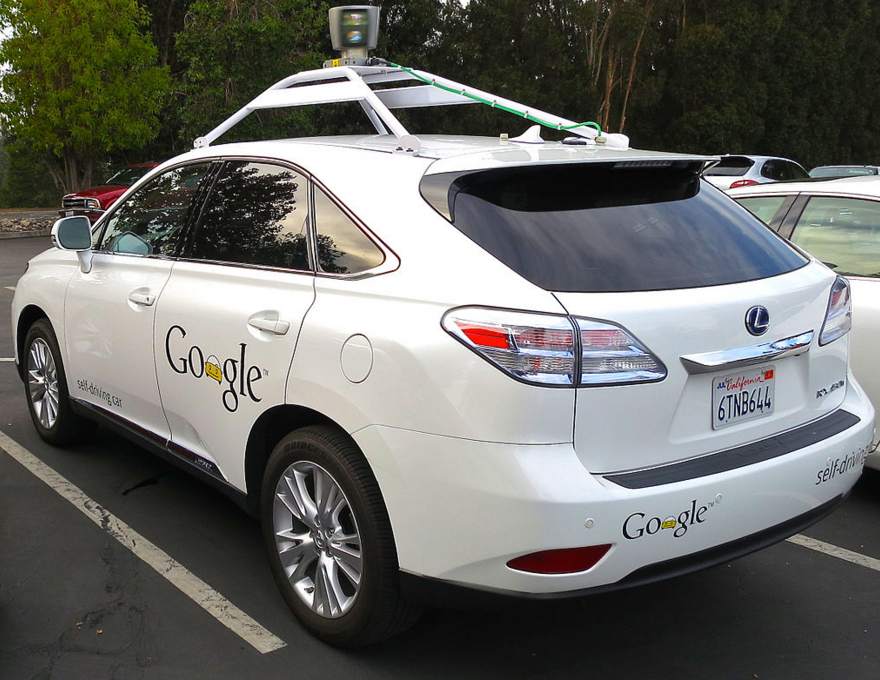Autonomous vehicles might have to be test-driven tens or hundreds of years to demonstrate their safety
April 11, 2016

A Lexus RX450h retrofitted by Google for its driverless car fleet (credit: Steve Jurvetson/CC)
Autonomous vehicles would have to be driven hundreds of millions of miles or even hundreds of billions of miles over tens and even hundreds of years (under some scenarios) to create enough data to statistically demonstrate their safety, when compared to the rate at which injuries and fatalities* occur in human-controlled cars and trucks, according to a new open-access RAND report.**
Although the total number of crashes, injuries and fatalities from human drivers is high**, the rate of these failures (77 injuries per 100 million miles driven) is low in comparison with the number of miles that people drive.
The solution is to find more practical testing methods, such as virtual testing and simulators, mathematical modeling, scenario testing, and pilot studies.
Another report, from the University of Michigan’s Transportation Research Institute in October 2015, found that even though they haven’t been at fault, self-driving test cars are involved in crashes at five times the rate of conventional cars per mile and four times the injury rate (although minor) — or twice as high, when figures are adjusted to take into account the fact that many accidents involving conventional cars go unreported.
* According to the Center for Disease Control and Prevention, motor vehicle accidents are a leading cause of premature death in the United States and are responsible for over $80 billion annually in medical care and lost productivity due to injuries. Autonomous vehicles hold enormous potential for managing this crisis and researchers say autonomous vehicles could significantly reduce the number of accidents caused by human error. According to the National Highway Traffic Safety Administration, more than 90 percent of automobile crashes are caused by human errors such as driving too fast, as well as alcohol impairment, distraction and fatigue. Autonomous vehicles are never drunk, distracted or tired; these factors are involved in 41 percent, 10 percent and 2.5 percent of all fatal crashes, respectively.
** As of March 2016, Google self-driving cars in “autonomous mode” have driven 1,498,214 miles. As of Feb. 29, 2016, only one Google self-driving car has caused an accident, according to Google (on Feb. 14, a Google self-driving car, traveling at 2 mph, pulled out in front of a public bus going 15 mph, according to the California DMV).